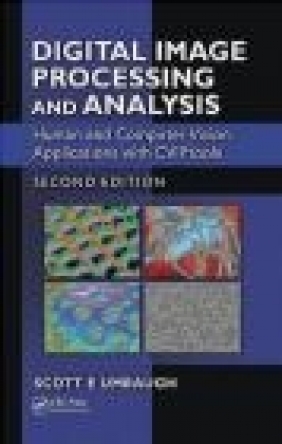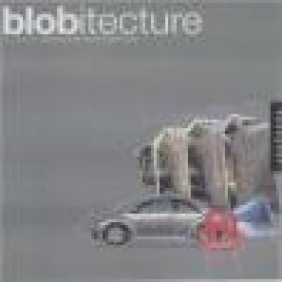Digital Imaging Processing and Analysis
Scott E. Umbaugh, S Umbaugh
Digital Imaging Processing and Analysis
Scott E. Umbaugh, S Umbaugh
- Producent: CRC Press Inc.
- Rok produkcji: 2010
- ISBN: 9781439802052
- Ilość stron: 977
- Oprawa: Twarda
Niedostępna
Opis: Digital Imaging Processing and Analysis - Scott E. Umbaugh, S Umbaugh
Digital image processing and analysis is a field that continues to experience rapid growth, with a diversity of applications ranging from areas such as space exploration to the entertainment industry. The field can be divided into two primary application areas, human vision and computer vision, with image analysis tying the two together. Although this book focuses on image processing and analysis, the image analysis part does provide the reader with the tools necessary for developing computer vision applications. The automatic identification of land types in satellites images, robotic control of a mars rover and the automatic classification of abnormalities in medical images are examples of computer vision applications. Human vision applications involve manipulation of image data for viewing by people, such as the development of better compression algorithms, special effects imaging for motion pictures, and the restoration of satellite images distorted by atmospheric disturbance. An introduction for students as well as a tutorial to update practicing professionals, this new edition of Computer Imaging is retitled to reflect the field's rapid development. More comprehensive and adding color throughout, this edition continues to take the engineering approach that sets it apart from other texts. It combines image processing and analysis into a unified framework, a useful paradigm for human and computer vision applications. Its applications-oriented nature is enhanced by coverage of new software tools that are integrated into the CVIPtools development environment: the CVIP Algorithm Test and Analysis Tool and the CVIP Feature Extraction and Pattern Classification Tool, which accompany the book on CD-ROM. The new Windows versions of these tools allow their users to realize a much more powerful development environment. They are integrated even more throughout the book than the previous edition to create a valuable environment for learning about imaging as well as providing a set of reusable tools for applications development. The following are new to this edition. It uses color throughout and adds more materials on the processing of color images. It reorganizes, updates, expands and adds more materials that make it more useful as an applications-oriented textbook including supplementary exercises. It adds a new chapter on applications. It develops two new major tools that allow for batch processing, the analysis of imaging algorithms, and the overall research and development of imaging applications. "Digital Image Processing and Analysis: Human and Computer Vision Applications with CVIPtools" is intended for use by the academic community in teaching and research, as well as working professionals performing research and development in the commercial sectors. This includes all area of digital image processing and analysis, both human and computer vision applications. The book requires only a fundamental background in computers and the basic math background provided in an undergraduate science or engineering program. Knowledge of the C, C++ or C# programming language will be necessary for those intending to develop algorithms at the programming level. Some background in signal and system theory is required for those intending to gain a deep understanding of the sections on transforms and compression. However, the book is written so that those without this background can learn to use the tools and achieve a conceptual understanding of the material. The author takes an approach to learning that presents topics as needed. This approach starts by presenting a global model to help gain an understanding of the overall process, followed by a breakdown and explanation of each individual topic. The book is divided into five major parts. The first part contains all of the basic concepts and definitions necessary to understand digital image processing. The second part describes image analysis and provides the tools, concepts and models required to analyze digital images and develop computer vision applications. Part III discusses topics and application areas for the processing of images for human consumption, so it starts with a chapter on visual perception. Each chapter includes numerous references and examples for the material presented The programming and applications development contained in the fourth section details all the necessary information required to use the CVIPtools environment for algorithm development. This section also includes information to assist with the implementation of the programming exercises included with each chapter. It provides a chapter on using the new development tools and examples of applications that have been developed in the past few years. The appendices contain reference material for use with CVIPtools, as well as other useful computer imaging related information. This is a nicely presented book and the topics it covers in depth are well described. ... if you are looking for a book on the basics of image processing complete with some ready-made software to let you work through the ideas, this is a good choice. Needless to say it would make a good course text ... -Mike James, IProgrammer, September 2011Section I Introduction to Digital Image Processing and Analysis Digital Image Processing and Analysis Overview Image Analysis and Computer Vision Image Processing and Human Vision Key Points Exercises References Further Reading Computer Imaging Systems Imaging Systems Overview Image Formation and Sensing CVIPtools Software Image Representation Key Points Exercises Supplementary Exercises References Further Reading Section II Digital Image Analysis and Computer Vision Introduction to Digital Image Analysis Introduction Preprocessing Binary Image Analysis Key Points Exercises Supplementary Exercises References Further Reading Segmentation and Edge/Line Detection Introduction and Overview Edge/Line Detection Segmentation Key Points Exercises Supplementary Exercises References Further Reading Discrete Transforms Introduction and Overview Fourier Transform Discrete Cosine Transform Discrete Walsh-Hadamard Transform Discrete Haar Transform Principal Components Transform Filtering Discrete Wavelet Transform Key Points Exercises Supplementary Exercises References Further Reading Feature Analysis and Pattern Classification Introduction and Overview Feature Extraction Feature Analysis Pattern Classification Key Points Exercises Supplementary Exercises References Further Reading Section III Digital Image Processing and Human Vision Digital Image Processing and Visual Perception Introduction and Overview Human Visual Perception Image Fidelity Criteria Key Points Exercises Supplementary Exercises References Further Reading Image Enhancement Introduction and Overview Gray-Scale Modification Image Sharpening Image Smoothing Key Points Exercises Supplementary Exercises References Further Reading Image Restoration and Reconstruction Introduction and Overview Noise Models Noise Removal Using Spatial Filters Degradation Function Frequency Domain Filters Geometric Transforms Image Reconstruction Key Points Exercises Supplementary Exercises References Further Reading Image Compression Introduction and Overview Lossless Compression Methods Lossy Compression Methods Key Points Exercises Supplementary Exercises References Further Reading Section IV Programming and Application Development with CVIPtools CVIPlab Introduction to CVIPlab Toolkits, Toolboxes, and Application Libraries Compiling and Linking CVIPlab Image Data and File Structures CVIP Projects Application Development Introduction and Overview CVIP Algorithm Test and Analysis Tool CVIP Feature Extraction and Pattern Classification Tool Skin Lesion Classification Using Relative Color Features Automatic Segmentation of Blood Vessels in Retinal Images Classification of Land Types from Satellite Images Using Quadratic Discriminant Analysis and Multilayer Perceptrons Watershed-Based Approach to Skin Lesion Border Segmentation Faint Line Defect Detection in Microdisplay (CCD) Elements Melanoma and Seborrheic Keratosis Differentiation Using Texture Features Compression of Color Skin Tumor Images with Vector Quantization References CVIPtools C(R) Function Libraries Introduction and Overview Arithmetic and Logic Library: ArithLogic.lib Band Image Library: Band.lib Color Image Library: Color.lib Compression Library: Compression.lib Conversion Library: Conversion.lib Display Library: Display.lib Feature Extraction Library: Feature.lib Geometry Library: Geometry.lib Histogram Library: Histogram.lib Image Library: Image.lib Data Mapping Library: Mapping.lib Morphological Library: Morphological.lib Noise Library: Noise.lib Segmentation Library: Segmentation.lib Spatial Filter Library: SpatialFilter.lib Transform Library: Transform.lib Transform Filter Library: TransformFilter.lib Section V Appendices CVIPtools CD Installing and Updating CVIPtools CVIPtools Software Organization CVIPtools C(R) Functions Common Object Module (COM) Functions: cviptools.dll CVIP Resources Index
Szczegóły: Digital Imaging Processing and Analysis - Scott E. Umbaugh, S Umbaugh
Tytuł: Digital Imaging Processing and Analysis
Autor: Scott E. Umbaugh, S Umbaugh
Producent: CRC Press Inc.
ISBN: 9781439802052
Rok produkcji: 2010
Ilość stron: 977
Oprawa: Twarda
Waga: 2.2 kg





























